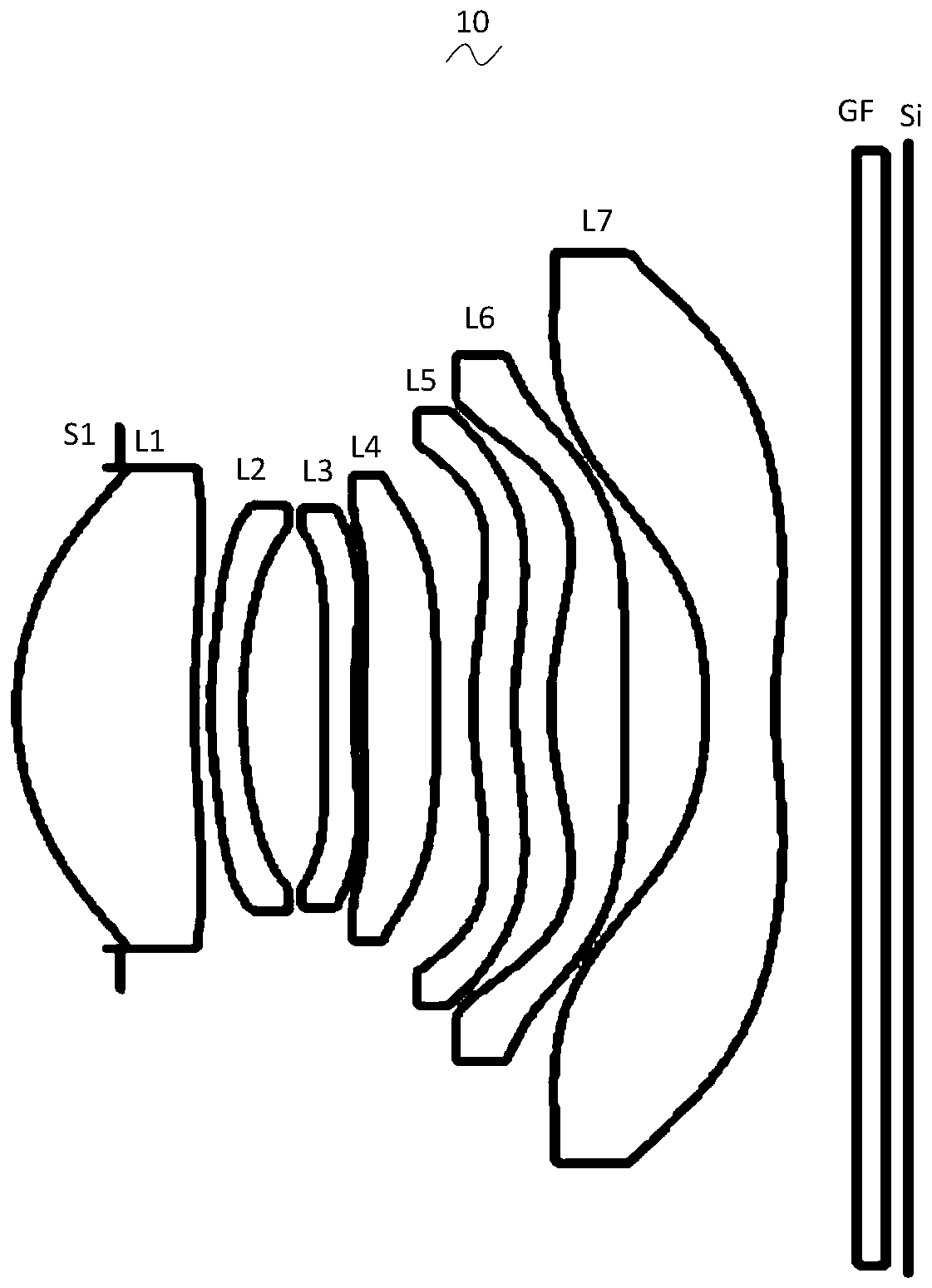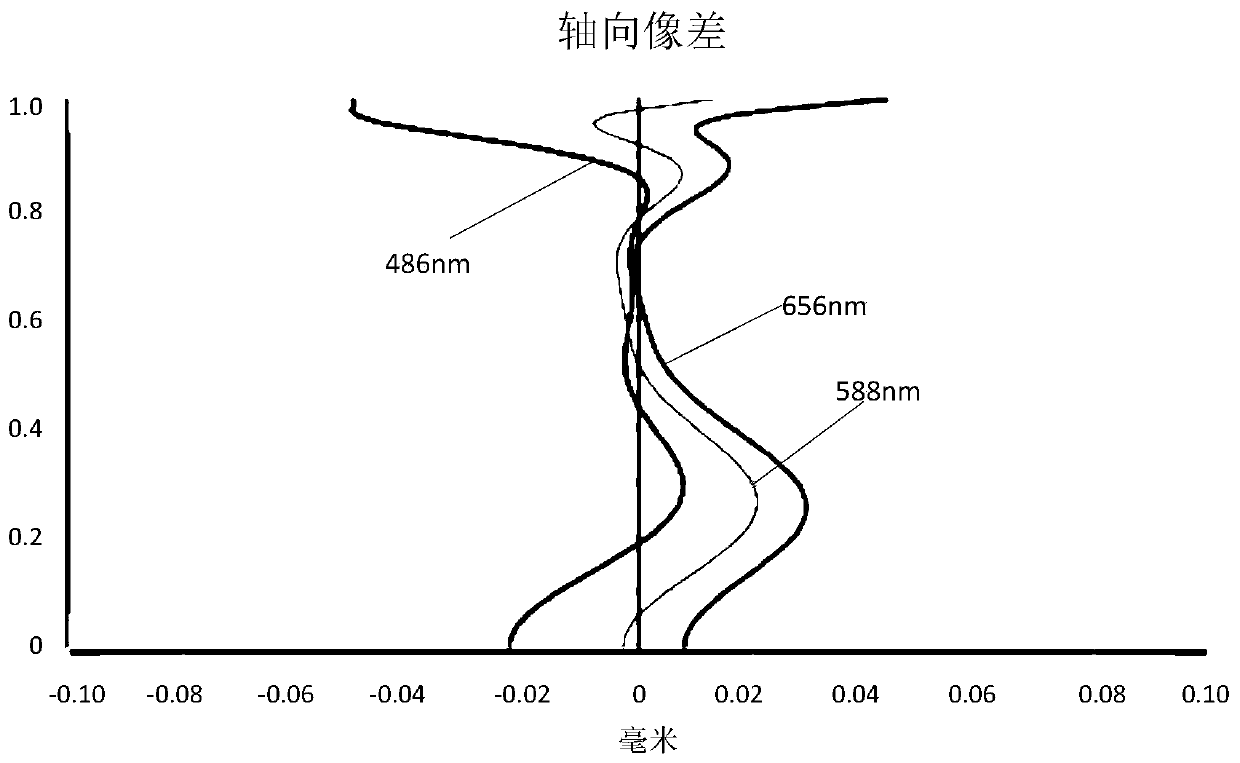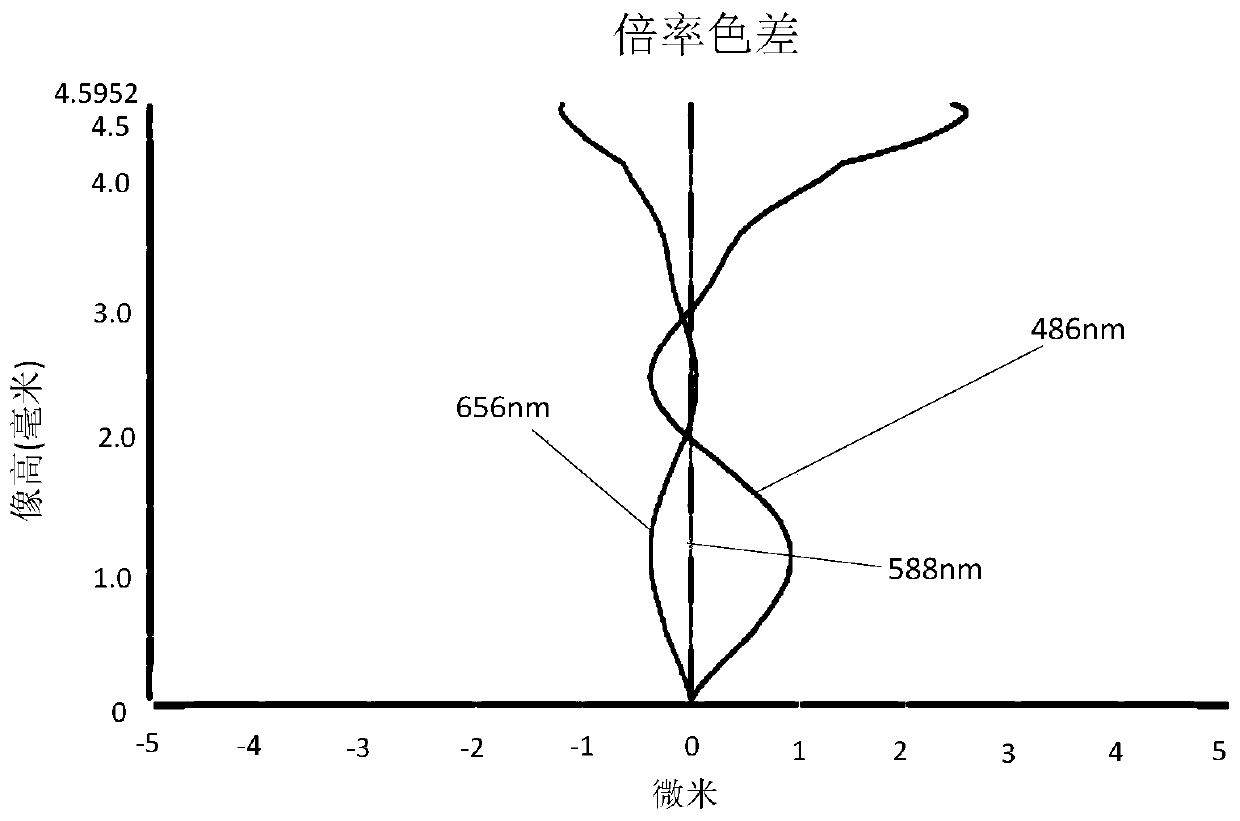Camera shooting optical lens
An optical lens and lens technology, which is applied in the field of optical lens, can solve problems such as large aperture, ultra-thin wide-angle, focal power, lens distance and lens shape setting irrationality, etc., to achieve good optical performance, correction Aberration, satisfying the effect of large aperture
- Summary
- Abstract
- Description
- Claims
- Application Information
AI Technical Summary
Problems solved by technology
Method used
Image
Examples
no. 1 approach
[0031] With reference to the drawings, the present invention provides an imaging optical lens 10. figure 1 Shown is the imaging optical lens 10 according to the first embodiment of the present invention. The imaging optical lens 10 includes seven lenses. Specifically, the imaging optical lens 10 includes in order from the object side to the image side: an aperture S1, a first lens L1, a second lens L2, a third lens L3, a fourth lens L4, a fifth lens L5, and a sixth lens. Lens L6 and seventh lens L7. In this embodiment, preferably, an optical element such as a glass plate GF is arranged between the seventh lens L7 and the image plane Si. The glass plate GF can be a glass cover plate or an optical filter, of course. In other embodiments, the glass plate GF can also be arranged in other positions.
[0032] In this embodiment, the first lens L1 has positive refractive power, its object side is convex outwards, and its image side is concave; the second lens L2 has negative refractive...
no. 2 approach
[0123] Figure 5 It is a schematic diagram of the structure of the imaging optical lens 20 in the second embodiment. The second embodiment is basically the same as the first embodiment, and the meaning of the symbols is the same as that of the first embodiment. Only the differences are listed below.
[0124] Table 5 and Table 6 show the design data of the camera 20 according to the second embodiment of the present invention. 【table 5】
[0125]
[0126]
[0127] 【Table 6】
[0128]
[0129] Table 7 and Table 8 show the design data of the inflection point and stagnation point of each lens in the imaging optical lens 20 of the embodiment of the present invention.
[0130] 【Table 7】
[0131]
[0132]
[0133] 【Table 8】
[0134]
[0135] In the following Table 21, the values corresponding to the various parameters in the second embodiment and the parameters specified in the conditional expressions are also listed.
[0136] Image 6 A schematic diagram showing the axial aberration of light wi...
no. 3 approach
[0139] Picture 9 It is a schematic diagram of the structure of the imaging optical lens 30 in the third embodiment. The third embodiment is basically the same as the first embodiment, and the meaning of the symbols is the same as that of the first embodiment. Only the differences are listed below.
[0140] Table 9 and Table 10 show design data of the imaging optical lens 30 of the third embodiment of the present invention.
[0141] 【Table 9】
[0142]
[0143] 【Table 10】
[0144]
[0145]
[0146] Table 11 and Table 12 show the design data of the inflection point and stagnation point of each lens in the imaging optical lens 30 of the embodiment of the present invention.
[0147] 【Table 11】
[0148]
[0149]
[0150] 【Table 12】
[0151]
Number of stationary points
Stagnation position 1
Stagnation position 2
P1R1
P1R2
1
1.595
P2R1
P2R2
P3R1
1
0.625
P3R2
1
0.885
P4R1
2
0.765
1.705
P4R2
2
0.105
1.895
P5R1
1
1.235
P5R2
1
1.125
P6R1
1
1.275
P6R2
P7R1
1
3.095
P7R2
1
1.095
[0152] I...
PUM
 Login to View More
Login to View More Abstract
Description
Claims
Application Information
 Login to View More
Login to View More - R&D
- Intellectual Property
- Life Sciences
- Materials
- Tech Scout
- Unparalleled Data Quality
- Higher Quality Content
- 60% Fewer Hallucinations
Browse by: Latest US Patents, China's latest patents, Technical Efficacy Thesaurus, Application Domain, Technology Topic, Popular Technical Reports.
© 2025 PatSnap. All rights reserved.Legal|Privacy policy|Modern Slavery Act Transparency Statement|Sitemap|About US| Contact US: help@patsnap.com



